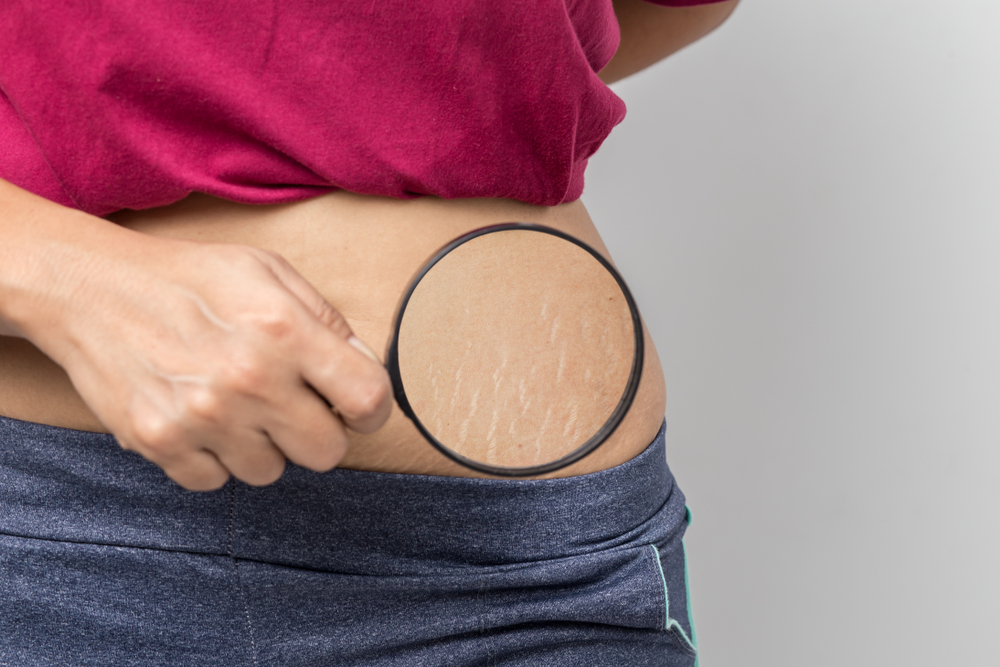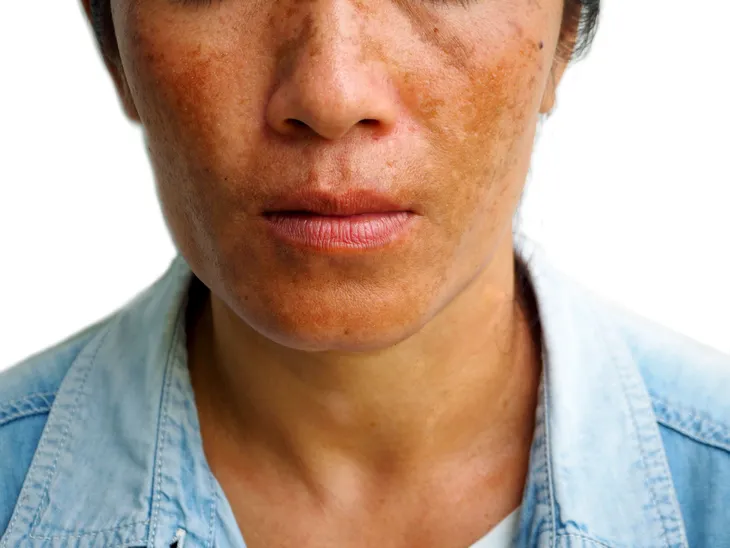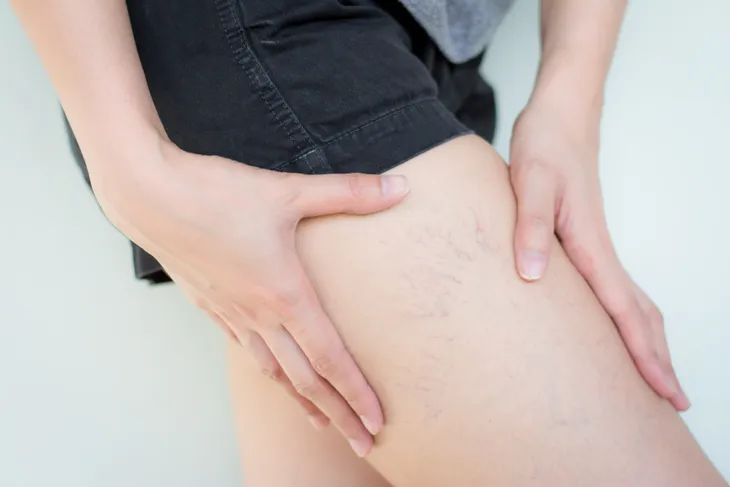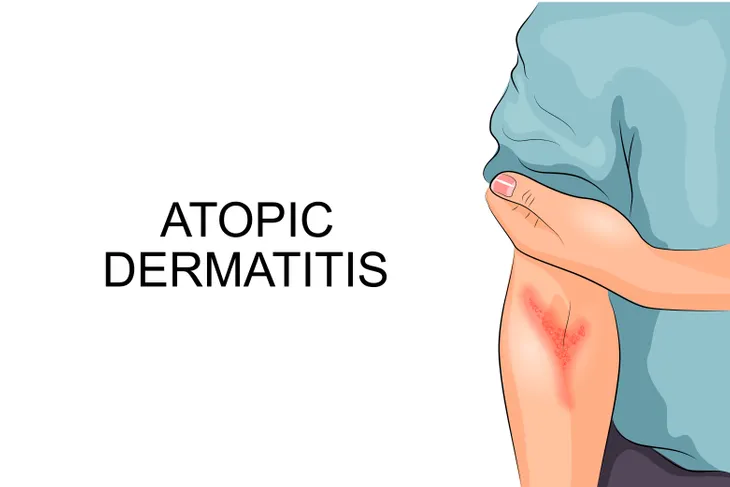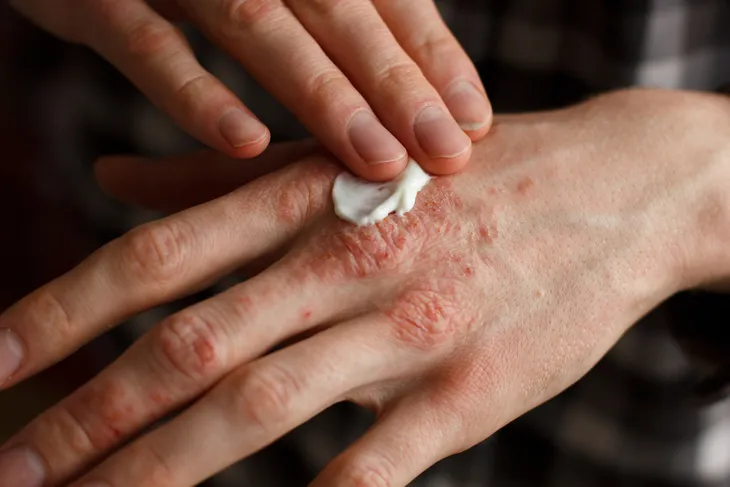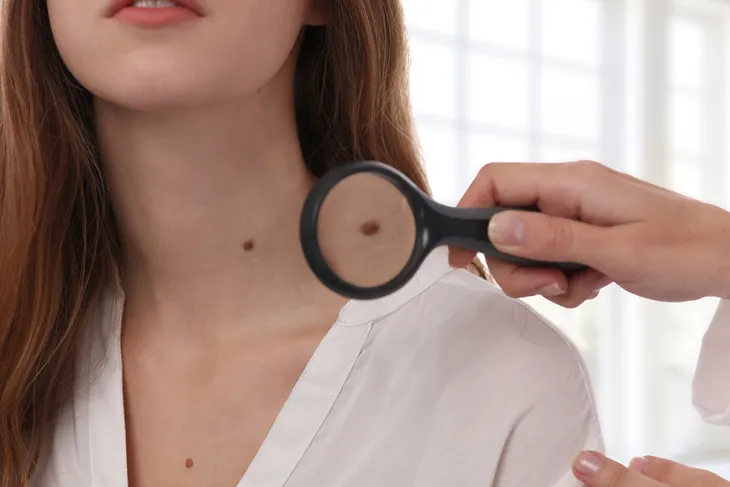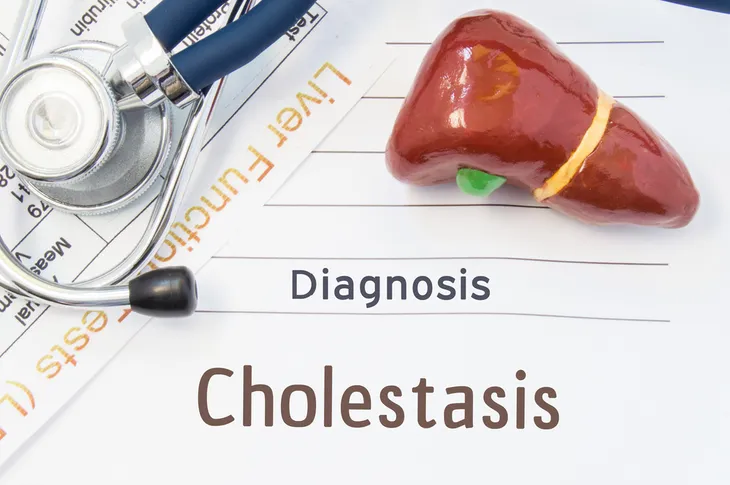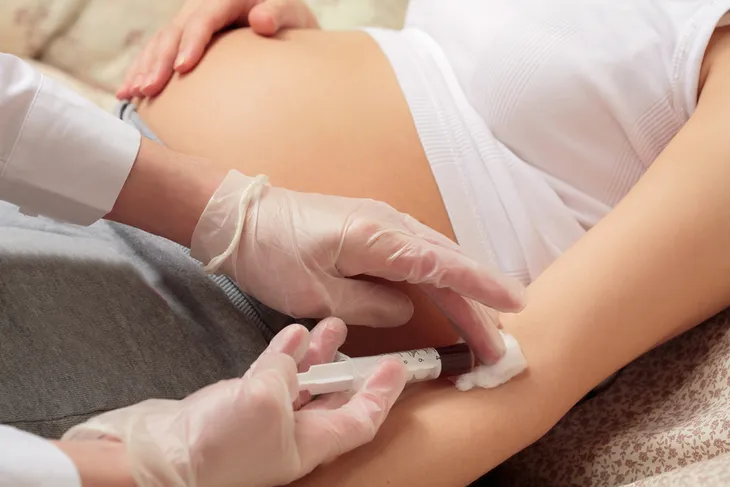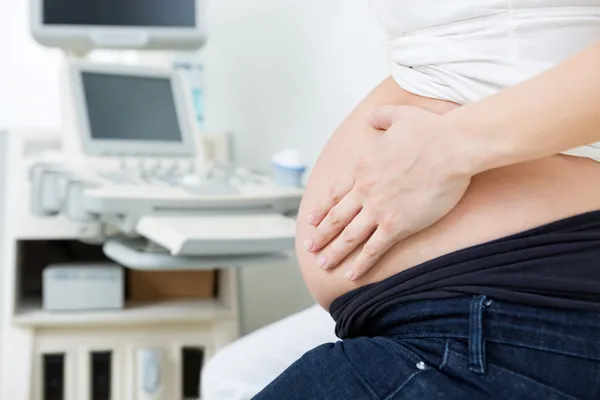Common skin conditions observed during pregnancy can be divided into three categories: hormone-related, preexisting, and pregnancy-specific. Normal hormonal changes as a result of pregnancy can cause benign (not cancerous) skin ailments. Preexisting skin conditions may change (improve or worsen) with pregnancy. Lastly, pregnancy can induce its own pregnancy-related skin diseases. A minority of these skin conditions require specific treatments and follow-up after giving birth. Conversely, the majority of these skin conditions only call for symptomatic treatment and resolve after giving birth. Twelve common skin conditions during pregnancy are…
1. Stretch Marks
Striae gravidarum, or stretch marks, are caused by normal hormonal changes accompanying pregnancy. The American Academy of Dermatology estimates stretch marks occur in up to 90-percent of pregnant women by the third trimester. Typically, stretch marks appear as reddish or purple lines or bands on the abdomen and may fade to pale or flesh-colored after pregnancy. The marks may also appear on the breasts, thighs, buttocks, and upper arms. They usually do not disappear completely.
Stretch marks occur when the body grows faster than the skin resulting in the breakdown of elastic fibers just beneath the skin. It is hard to determine who will develop stretch marks, but risk factors include family history of stretch marks with pregnancy, rapid weight gain, carrying multiples, carrying large babies, and being nonwhite. An array of creams and oils are used to prevent stretch marks; however, there is no scientific evidence that they are effective.
2. Melasma
Melasma, also known as chloasma or “mask of pregnancy”, is caused by normal hormonal changes accompanying pregnancy. It may be the most cosmetically troublesome skin condition associated with pregnancy. The condition is characterized by brown to gray-brown patches on the face (cheeks, bridge of nose, forehead, chin, and above the upper lip). The American Academy of Dermatology estimates melasma affects up to 70-percent of pregnant women. Risk factors for its development include family history of melasma with pregnancy and dark skin.
Sun exposure causes melasma to worsen. Protection from the sun with sunscreen and a wide-brimmed hat is recommended. In most cases, melasma improves or resolves postpartum (after pregnancy). Severe postpartum melasma may be treated by a dermatologist with hydroquinone or tretinoin and topical steroids. Chemical peels, microdermabrasion, and dermabrasion are procedures performed by a dermatologist that may also be used to treat melasma.
3. Spider Veins
Spider veins, also known as spider angiomas, are caused by normal hormonal changes and increased blood volume accompanying pregnancy. Spider veins most commonly occur on the legs and represent collections of tiny engorged blood vessels radiating from a central point, which resemble the legs of a spider. They may also occur on the face, chest, arms, or abdomen. Spider veins can be uncomfortable or painful at times. Risk factors for the development of spider veins include a family history of spider veins with pregnancy and carrying multiples.
Treatment of spider veins may include support/compression stockings, vitamin C, avoidance of crossing legs, exercising, elevation of feet and legs as much as possible, and sleeping on left side with a pillow wedged behind back. The majority of spider veins resolve three to four months after giving birth. Spider veins persisting after pregnancy may be treated with sclerotherapy or laser treatment.
4. Atopic Dermatitis
Atopic dermatitis, also known as eczema, is a pre-existing skin condition that may improve or worsen during pregnancy. It is often diagnosed in childhood and almost half of all individuals continue to have intermittent symptoms as an adult. The condition is characterized by intermittent dry skin patches that are usually inflamed and itchy. The patches can occur anywhere on the skin, but most often appear on the scalp, forehead, and cheeks.
Atopic dermatitis is not contagious, but scratching affected skin areas can lead to a secondary skin infection. If the condition worsens with pregnancy, there are measures that can provide relief. Skin care tips include the avoidance of sweating (if possible); showers or baths should be short with lukewarm water; frequent and generous application of moisturizing lotions or creams; cool, wet compresses to soothe itching; and avoidance of triggers or irritants. Use of prescription remedies should be discussed with a physician.
5. Psoriasis
Psoriasis is a pre-existing skin condition that may improve (60-percent), worsen (20-percent), or stay the same (20-percent) during pregnancy. Psoriasis is a complex inflammatory skin condition characterized by red, raised, and roughened areas covered with white or silver scale. It most commonly affects the skin of the elbows, knees, and scalp. The joints can also be affected by psoriasis and up to 30-percent of patients are diagnosed with psoriatic arthritis.
As a precaution, most dermatologists and obstetricians recommend stopping psoriasis medications prior to becoming pregnant. The psoriasis medications acitretin (Soriatane), methotrexate, and tazarotene (Tazorac) have been shown to cause birth defects. Tips to manage psoriasis safely while pregnant include application of moisturizers (e.g., petroleum jelly or mineral oil), reduction of stress, cool compresses for itchiness, and light therapy (e.g., natural sunlight or phototherapy in a dermatologist’s office [the best]). Small amounts of some topical psoriasis medications (not tazarotene) are safe to use in pregnancy and should be discussed with a physician.
6. Skin Tags
Skin tags are a pre-existing skin condition that typically worsens with pregnancy. They are small, soft, flesh-colored skin growths. Skin tags represent overgrowth of the outer layer of skin called the epidermis. They typically occur in areas where skin rubs against skin or clothing such as eyelids, neck, groin, upper chest, abdomen, under the breasts, and armpits. Unfortunately, these skin growths cannot be prevented. The good news: Skin tags are benign (not cancerous) and will not affect the developing fetus.
Most skin tags eventually disappear after giving birth. Persistent tags can be removed by a dermatologist (skin specialist) or primary care physician (PCP) in various ways. They can be snipped off with scissors or a suture (stitch) can be placed at its narrow base. The tags can be removed by freezing with liquid nitrogen. Lastly, they can be removed by cauterization, a medical procedure that uses heat to destroy the skin tags. There is no evidence that skin tags are contagious or removing them causes more to develop.
7. Pruritic Urticarial Papules and Plaques of Pregnancy
Pruritic urticarial papules and plaques of pregnancy (PUPPP) are the most common pregnancy-related abnormal skin condition. The chronic red, bumpy rash associated with PUPPP initially appears on the abdomen and occasionally spreads to the arms and legs. The face is not usually affected by PUPPP. The rash usually appears in the third trimester of pregnancy and is characterized by extreme itchiness. The lesions of PUPPP are often accompanied by stretch marks.
The cause of PUPPP is unclear. It is not contagious and does not affect the developing fetus. The skin condition is more common with first pregnancies and during a multiples pregnancy (i.e., twins and triplets). There is no specific treatment for PUPPP, but itching (the most prominent symptom) may be treated with moisturizers, oral antihistamines (diphenhydramine [Benadryl] and cetirizine [Zyrtec] are safe), topical steroids (e.g., 1-percent hydrocortisone cream), cool compresses, and oatmeal baths. The condition usually resolves one to two weeks after giving birth.
8. Prurigo of Pregnancy
Prurigo of pregnancy is a pregnancy-related abnormal skin condition characterized by an itchy rash consisting of papules (a circumscribed solid elevation of skin with no visible fluid that is no more than 1-centimeter in diameter). Other names for prurigo of pregnancy include prurigo gestationis, papular dermatitis of pregnancy, and pruritic folliculitis of pregnancy. The condition is benign (noncancerous) and has been reported in all trimesters of pregnancy. The lesions primarily appear on the arms, legs, shoulders, and abdomen.
The cause of prurigo of pregnancy is unknown. It is a clinical diagnosis, as there are definitive diagnostic tests. No adverse effects to the mother or fetus have been reported with prurigo of pregnancy. Treatments for prurigo of pregnancy target its accompanying itchiness. Antihistamines (i.e., diphenhydramine [Benadryl] or cetirizine [Zyrtec] and medium potency topical steroids by prescription (e.g., betamethasone) may be used to relieve itching. The condition typically clears several weeks after giving birth.
9. Cholestasis of Pregnancy
Cholestasis of pregnancy is a pregnancy-related abnormal skin condition characterized by the development of severe generalized skin itchiness during the third trimester of pregnancy. Jaundice (yellowing of the skin) may or may not be associated with the disease and the disease is the second most common cause of jaundice during pregnancy. There are usually no skin lesions associated with cholestasis of pregnancy. A family history of the disease is common, and it is associated with twin pregnancies.
The etiology of cholestasis of pregnancy has not been determined. Laboratory testing reveals cholestasis (elevated bile acid and alkaline phosphatase blood levels with or without elevated bilirubin levels). Cholestasis of pregnancy is not harmless and can lead to premature delivery, low birth weight, and intrauterine fetal death. Mild itchiness may be treated with oral antihistamines. Severe cases require treatment with ursodiol (Actigall) to relieve itching, improve cholestasis, and reduce adverse fetal outcomes.
10. Pemphigoid Gestationis
Pemphigoid gestationis is a pregnancy-related abnormal skin condition characterized by an intensely pruritic (itchy) hive-like eruption that forms tense blisters. In 50-percent of cases, the lesions present on the abdomen (primarily around or near the umbilicus [belly button]). Pemphigoid gestationis is an autoimmune disease (the body attacks itself) and typically occurs in the second to third trimesters of pregnancy. Individuals with a history of the condition are at increased risk for other autoimmune diseases (e.g. Graves’ disease [hyperthyroidism]).
The condition was first described in 1872 as herpes gestationis, but was renamed pemphigoid gestationis in 1982. The condition typically recurs with subsequent pregnancies with an earlier onset and a more severe clinical course. Treatment may include oral steroids, which may have to be increased around the time of delivery. Other treatment options may include topical steroids, oral antihistamines, and plasmapheresis (a treatment for autoimmune disorders).
11. Impetigo Herpetiformis
Impetigo herpetiformis is a rare pregnancy-related abnormal skin condition characterized by an acute eruption of pustular psoriasis. The lesions (sterile pus-filled blisters on a reddened base) typically begin in the creases of the arms, legs, and groin and spread to the trunk. Impetigo herpetiformis most commonly occurs during the third trimester of pregnancy in women with no previous history of psoriasis. The disease may recur with subsequent pregnancies with an earlier onset and a more severe clinical course.
Pruritus, or itching, is usually not a symptom of impetigo herpetiformis. Constitutional symptoms such as fever, nausea, vomiting, diarrhea, and enlarged lymph nodes may occur with the skin lesions. Complications of the disease may include infection, sepsis (a life-threatening bacterial blood infection), and hypocalcemia (low levels of blood calcium). Treatment consists of oral steroids (e.g., prednisone) and antibiotics for infection. The disease imparts an increased risk of fetal death and typically resolves after delivery.
12. Pruritic Folliculitis of Pregnancy
Pruritic folliculitis of pregnancy is a pregnancy-related abnormal skin condition characterized by small, reddened pus-filled lesions surrounding hair follicles on the trunk and extremities. It most commonly occurs in the second to third trimester of pregnancy. The lesions, which are sterile, are often misdiagnosed as bacterial folliculitis. Contrary to its name, pruritus (itching) is not a major symptom of the disorder.
The cause of pruritic folliculitis of pregnancy is unknown. There have been no reports of adverse effects to the fetus. Treatment options for the disease include topical steroids, topical benzoyl peroxide (Benzac), and ultraviolet B (UVB) light therapy. The condition spontaneously resolves after delivery of the fetus.
